
Bavaria, officially the Free State of Bavaria, is a landlocked state (Land) in the south-east of Germany. With an area of 70,550.19 square kilometres (27,239.58 sq mi), Bavaria is the largest German state by land area, comprising roughly a fifth of the total land area of Germany. With 13 million inhabitants, it is second in population only to North Rhine-Westphalia, but due to its large size it is one of the least densely populated states. Bavaria's main cities are Munich, Nuremberg, and Augsburg.

Swabia is one of the seven administrative regions of Bavaria, Germany.
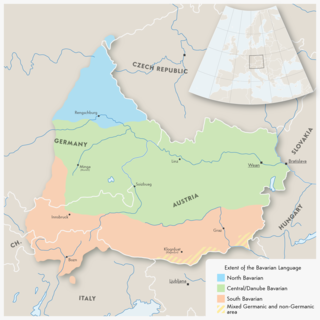
Austro-Bavarian is a West Germanic language spoken in parts of Bavaria and most of Austria. Before 1945, Austro-Bavarian was also prevalent in parts of the southern Czech Republic and western Hungary. Bavarian forms a continuum of more or less mutually intelligible local and regional variants. Its mutual intelligibility with Standard German is very limited, but most of its speakers can code-switch to Standard German.
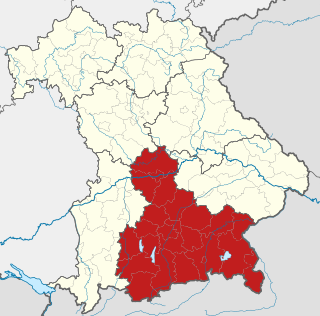
Upper Bavaria is one of the seven administrative districts of Bavaria, Germany.

Lower Bavaria is one of the seven administrative regions of Bavaria, Germany, located in the east of the state.
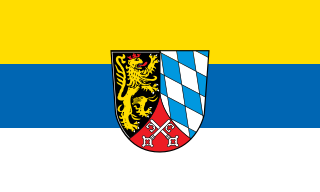
The Upper Palatinate is one of the seven administrative districts of Bavaria, Germany, and is located in the east of Bavaria.
Altötting is a Landkreis (district) in Bavaria, Germany. It is bounded by Austria and the Bavarian districts of Traunstein, Mühldorf and Rottal-Inn.
The Regen is a river in Bavaria, Germany, and a left tributary of the Danube, at Regensburg, Germany. The source of its main headstream, the Great Regen, is in the Bohemian Forest on the territory of the Czech Republic, near Železná Ruda. The river crosses the border after a few kilometres, at Bayerisch Eisenstein. The name in German evolved from the name in Latin, but its meaning is unknown. The Romans called the river variously Regana, Reganus (masculine), and Reganum (neuter).
Freyung-Grafenau is a Landkreis (district) in Bavaria, Germany. It is bounded by the districts of Passau, Deggendorf and Regen, the Czech Republic and by Austria.

Bavarian Alps is a summarizing term of several mountain ranges of the Northern Limestone Alps in the German state of Bavaria.

Bavarians are an ethnographic group of Germans of the Bavaria region, a state within Germany. The group's dialect or speech is known as the Bavarian language, native to Altbayern, roughly the territory of the Electorate of Bavaria in the 17th century.

Central Bavarian, also known as Central Austro-Bavarian, form a subgroup of Bavarian dialects in large parts of Austria and the German state of Bavaria along the Danube river, on the northern side of the Eastern Alps. They are spoken in the 'Old Bavarian' regions of Upper Bavaria, Lower Bavaria and in the adjacent parts of the Upper Palatinate region around Regensburg, in Upper and Lower Austria, in Vienna, in the state of Salzburg, as well as in the northern and eastern parts of Styria and Burgenland.
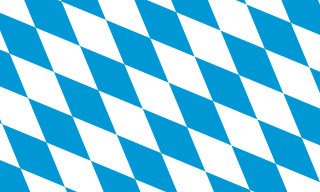
The Duchy of Bavaria was a frontier region in the southeastern part of the Merovingian kingdom from the sixth through the eighth century. It was settled by Bavarian tribes and ruled by dukes (duces) under Frankish overlordship. A new duchy was created from this area during the decline of the Carolingian Empire in the late ninth century. It became one of the stem duchies of the East Frankish realm which evolved as the Kingdom of Germany and the Holy Roman Empire.

The Kingdom of Bavaria was a German state that succeeded the former Electorate of Bavaria in 1805 and continued to exist until 1918. The Bavarian Elector Maximilian IV Joseph of the House of Wittelsbach became the first King of Bavaria in 1805 as Maximilian I Joseph. The crown would go on being held by the Wittelsbachs until the kingdom came to an end in 1918. Most of Bavaria's present-day borders were established after 1814 with the Treaty of Paris, in which Bavaria ceded Tyrol and Vorarlberg to the Austrian Empire while receiving Aschaffenburg and Würzburg. With the unification of Germany into the German Empire in 1871, the kingdom became a federated state of the new empire and was second in size, power, and wealth only to the leading state, the Kingdom of Prussia. In 1918, Bavaria became a republic after the German Revolution, and the kingdom was thus succeeded by the current Free State of Bavaria.
Southern Germany as a region has no exact boundary but is generally taken to include the areas in which Upper German dialects are spoken. This corresponds roughly to the historical stem duchies of Bavaria and Swabia or, in a modern context, to Bavaria and Baden-Württemberg within the Federal Republic of Germany, to the exclusion of the areas of the modern states of Austria and Switzerland. The Saarland and the southern parts of Hesse and Rhineland-Palatinate are sometimes included as well and correspond to the historical Franconia.

Weismain is a town in the district of Lichtenfels, in northern Bavaria, Germany. It is situated 15 km west of Kulmbach, and 15 km southeast of Lichtenfels.

The Margraviate of Austria was a medieval frontier march, centered along the river Danube, between the river Enns and the Vienna Woods (Wienerwald), within the territory of modern Austrian provinces of Upper Austria and Lower Austria. It existed from c. 972 to 1156.

The Bezirksoberliga Oberfranken was the seventh tier of the German football league system in the Bavarian Regierungsbezirk of Upper Franconia. Until the introduction of the 3. Liga in 2008 it was the sixth tier of the league system, until the introduction of the Regionalligas in 1994 the fifth tier.

The SC Weismain-Obermain is a German association football club from the city of Weismain, Bavaria.
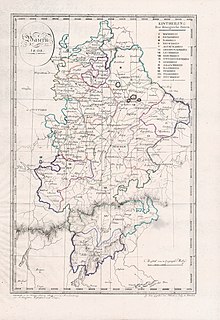
The Mainkreis was one of the 15 administrative districts of the Kingdom of Bavaria between 1806 and 1837. The district was named after its main river Main and renamed Obermainkreis in 1817. It was the predecessor of the Regierungsbezirk Oberfranken.















